The Michigan Pomesters, which as the name implies is mostly about apples and apple growers, organized a trip into the heart of Michigan cherry country on July 3. The idea was to look at how and why these cherry growers are growing more and better apples.
Most of the Pomesters came from the Fruit Ridge area just north of Grand Rapids and boarded a bus to the heart of Michigan’s cherry country around Traverse City, Michigan, 150 miles north.
They spent the morning at “the cherry station,” the Northwest Michigan Horticulture Research Center 20 miles north of Traverse City. The station is celebrating 35 years in existence this year.
The station is unique in that it’s owned by growers in five counties and staffed my Michigan State University, which pays the growers $1 a year to use the land and buildings. In 1979, the growers raised the equivalent of $1 million in today’s dollars, to buy the land and build the buildings. All that was described by Dr. Nikki Rothwell, the station coordinator, whose expertise extends into all things cherries, plus entomology and hard cider.
Work with apples has focused on making intensively planted trees grow on the area’s gravelly soils, long considered too porous for high-density apples. Much of the work is about applying adequate water and fertilizer, mostly through double-trickle irrigation lines that deliver the 0.75 inches of water needed each week.
In other apple work, MSU’s plant pathologist Dr. George Sundin is trying to find the cause and cures for an apple tree disease complex that appears to only attack the redder strains the McIntosh, especially LindaMac and RubyMac.
Besides apple trials, the station hosts experiments on sweet and tart cherries, dwarfing rootstocks for apples and cherries, wine grapes, and, a new crop, hops.
Last winter was a hard one on vinifera grapes, with local growers seeing some degree of damage on three-fourths of their crop. Mostly primary buds were lost.
The winter was also hard on apple varieties that mature late—Jonagold, Mutsu, and Fuji—and apple trees were attacked by rabbits, mice, and voles working in the deep snow. Leelanau County, where the station is located, recorded 265 inches of snow last winter.
The station has long taken an interest in alternative pollinators and developing the techniques needed to foster mason bees. The day the Pomesters visited, MSU entomologist Dr. Doug Landis was putting in a large planting of 56 species of flowering plants (replicated four times) to test their ability to provide alternative food sources for pollinators.
Experiments are underway to see whether ReTain (aminoethoxyvinylglycine) applied to Regina sweet cherries and Balaton tart cherries will help these shy bearers set a bigger crop. For Balaton, the current hypotheses is that it has slow-growing pollen that needs warm weather to mature. ReTain has shown some ability to lengthen pollen life.
The sandy soil is a great place for nematodes, so cover crop trials are also under way to find plants that provide fumigation services—while also adding some much needed organic matter.
Experiments are under way on deer fencing, too. “Deer are a real problem for us. We need deer fence,” Rothwell said. “It’s hard to shoot all these deer with so many new houses all around.”
In addition, the state’s deer hunters have successfully lobbied for more “quality deer management” areas, making it illegal to shoot bucks with fewer than three points on each antler. “We’re seeing a lot more buck rubs,” Rothwell said. Bigger antlers on bigger bucks mean more limbs on more trees are broken.

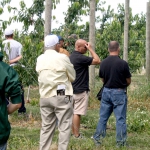
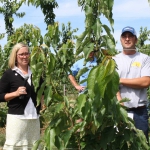
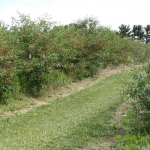
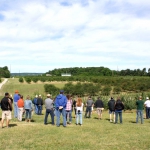
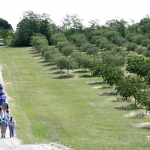
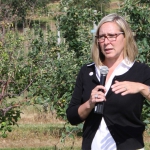





Leave A Comment